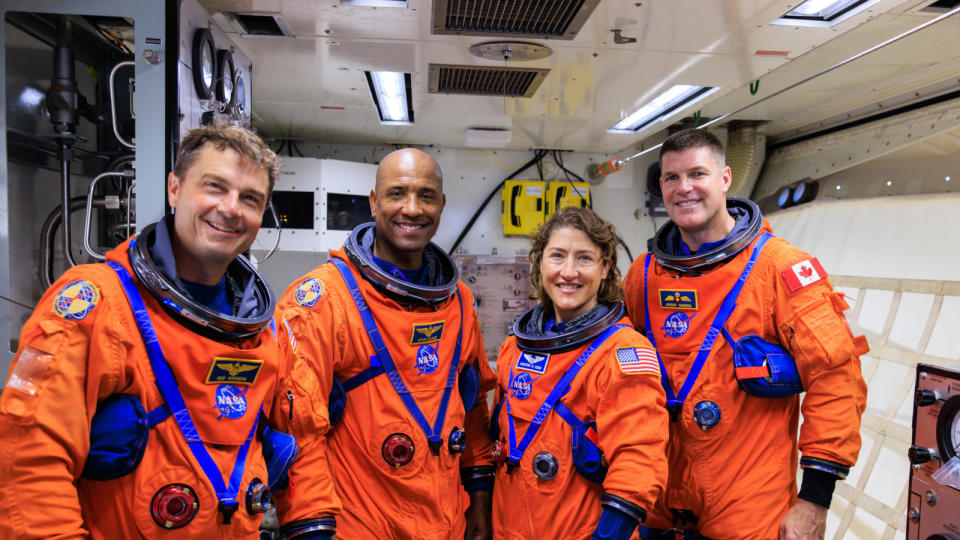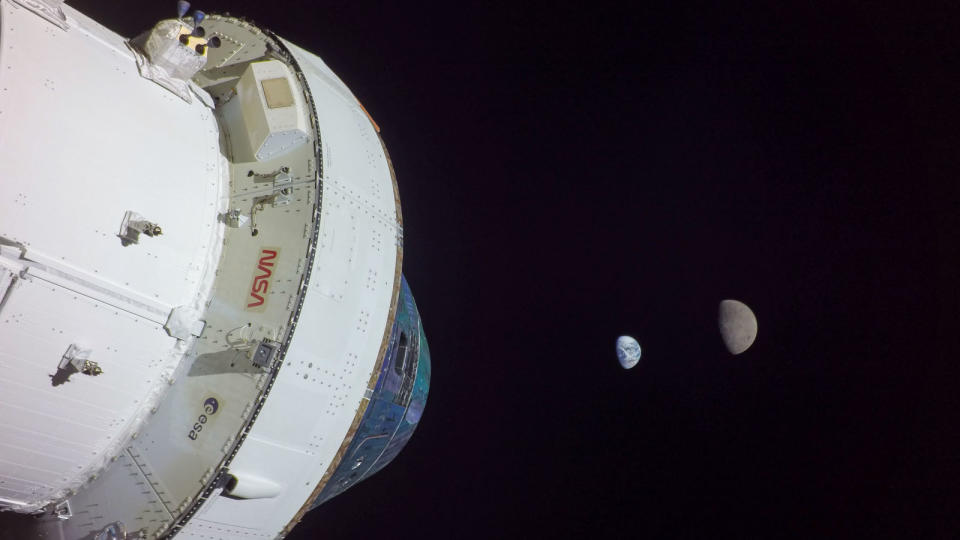NASA's Artemis II mission delayed until late 2025

- Oops!Something went wrong.Please try again later.
Citing safety concerns, NASA officials announced on Tuesday that Artemis II — the first crewed mission to the Moon since 1974 — has been delayed until late 2025.
Later this year, astronauts Christina Koch, Victor Glover, Reid Wiseman, and Canadian Jeremy Hansen were supposed to launch on the Artemis II mission. This would see them become the first humans to visit the Moon in over 50 years. Now, due to technical problems, their timeline has been pushed back to September 2025.

Canadian astronaut Jeremy Hansen (far right) and his fellow Artemis II crewmembers, (far left to centre-right) Reid Wiseman, Victor Glover, and Christina Koch, stand in the white room on the crew access arm of the mobile launcher at Launch Pad 39B as part of an integrated ground systems test at Kennedy Space Center in Florida. Credit: NASA/Kim Shiflett
According to the Canadian Space Agency, "NASA's testing to qualify components to keep the crew safe and ensure mission success has uncovered issues that require additional time to resolve. Teams are troubleshooting a battery issue and addressing challenges with a circuitry component responsible for air ventilation and temperature control."
In a press conference on Tuesday, NASA officials explained that a design flaw was discovered in one of the life support components for the Artemis III Orion spacecraft. In order to ensure the safety of the crew during Artemis II, their crews now need to access the same components in the Artemis II Orion capsule to ensure they do not suffer from this same flaw.
Additionally, NASA's investigation of the heat shield performance of the Artemis I capsule during reentry is nearing its conclusion. The team is currently examining data that shows charred material from the heat shield detached during reentry maneuvers. While NASA says there would have been no danger, had there been crew members on board, they need to completely understand this unexpected result before they fly a crewed mission with the same component.
Adding all of that up, the Artemis team pushed the next flight back one year to give them enough time to evaluate and resolve those issues.
"Jeremy [Hansen] and Jenni Gibbons, Canada's backup for Artemis II, continue to train and will be ready whenever required," the CSA said in their press release.
As a result of Artemis II delay, the Artemis III mission has also been pushed back. The first mission to land humans on the Moon since 1974 is now scheduled to launch in September 2026.
"We are letting the hardware talk to us so that crew safety drives our decision-making," Catherine Koerner, the associate administrator of NASA's Exploration Systems Development Mission Directorate, said on Tuesday. "We will use the Artemis II flight test, and each flight that follows, to reduce risk for future Moon missions."

*The Artemis I Orion spacecraft is pictured here, taken by a camera attached to one of its solar panels, at its farthest distance from Earth, 432,210 km, on November 28, 2022. Both the Moon and Earth are visible in the frame. Credit: NASA.
"Artemis is a long-term exploration campaign to conduct science at the Moon with astronauts and prepare for future human missions to Mars," Amit Kshatriya, the manager of NASA’s Moon to Mars Program Office, said in the NASA update. "That means we must get it right as we develop and fly our foundational systems so that we can safely carry out these missions. Crew safety is and will remain our number one priority."
At this time, NASA officials do not believe that the delays for Artemis II and III will have any impact on the planned launch of Artemis IV in September of 2028. Artemis IV will be the first crewed launch to the Lunar Gateway Station, and will deliver the station's crew habitat. The mission will also feature the second crewed landing on the Moon of the Artemis program.

